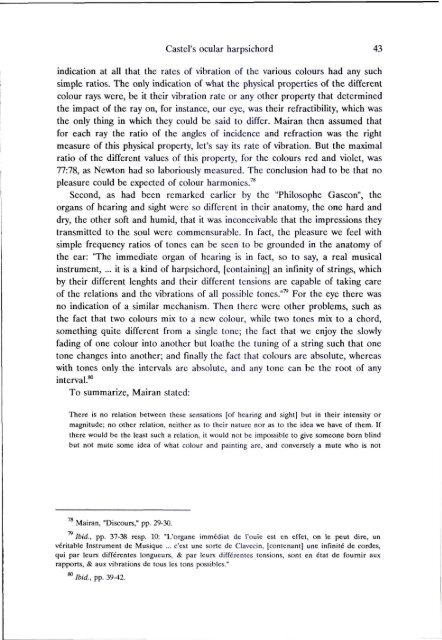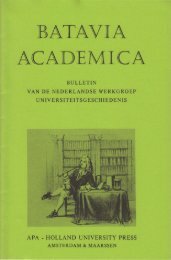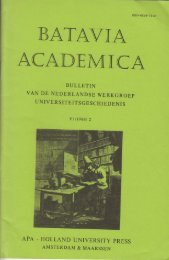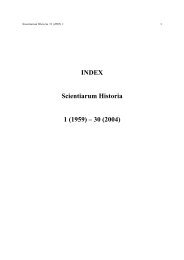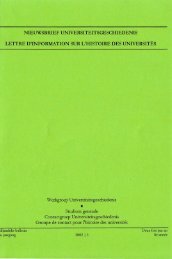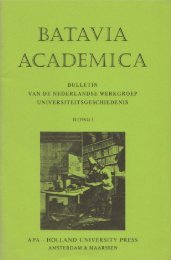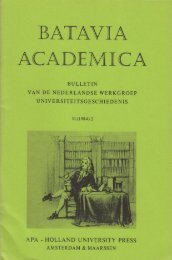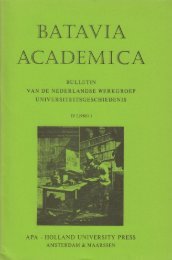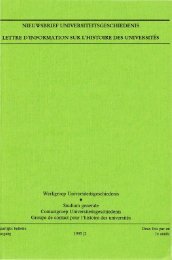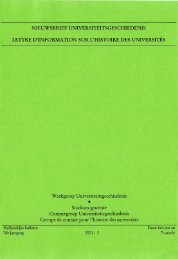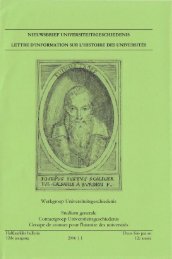the ocular harpsichord of louis-bertrand castel - Gewina
the ocular harpsichord of louis-bertrand castel - Gewina
the ocular harpsichord of louis-bertrand castel - Gewina
You also want an ePaper? Increase the reach of your titles
YUMPU automatically turns print PDFs into web optimized ePapers that Google loves.
Castel's <strong>ocular</strong> <strong>harpsichord</strong> 43<br />
indication at all that <strong>the</strong> rates <strong>of</strong> vibration <strong>of</strong> <strong>the</strong> various colours had any such<br />
simple ratios. The only indication <strong>of</strong> what <strong>the</strong> physical properties <strong>of</strong> <strong>the</strong> different<br />
colour rays were, be it <strong>the</strong>ir vibration rate or any o<strong>the</strong>r property that determined<br />
<strong>the</strong> impact <strong>of</strong> <strong>the</strong> ray on, for instance, our eye, was <strong>the</strong>ir refractibility, which was<br />
<strong>the</strong> only thing in which <strong>the</strong>y could be said to differ. Mairan <strong>the</strong>n assumed that<br />
for each ray <strong>the</strong> ratio <strong>of</strong> <strong>the</strong> angles <strong>of</strong> incidence and refraction was <strong>the</strong> right<br />
measure <strong>of</strong> this physical property, let's say its rate <strong>of</strong> vibration. But <strong>the</strong> maximal<br />
ratio <strong>of</strong> <strong>the</strong> different values <strong>of</strong> this property, for <strong>the</strong> colours red and violet, was<br />
77:78, as Newton had so laboriously measured. The conclusion had to be that no<br />
pleasure could be expected <strong>of</strong> colour harmonies.''*<br />
Second, as had been remarked earlier by <strong>the</strong> "Philosophe Gascon", <strong>the</strong><br />
organs <strong>of</strong> hearing and sight were so different in <strong>the</strong>ir anatomy, <strong>the</strong> one hard and<br />
dry, <strong>the</strong> o<strong>the</strong>r s<strong>of</strong>t and humid, that it was inconceivable that <strong>the</strong> impressions <strong>the</strong>y<br />
transmitted to <strong>the</strong> soul were commensurable. In fact, <strong>the</strong> pleasure we feel with<br />
simple frequency ratios <strong>of</strong> tones can be seen to be grounded in <strong>the</strong> anatomy <strong>of</strong><br />
<strong>the</strong> ear: "The immediate organ <strong>of</strong> hearing is in fact, so to say, a real musical<br />
instrument, ... it is a kind <strong>of</strong> <strong>harpsichord</strong>, [containing] an infinity <strong>of</strong> strings, which<br />
by <strong>the</strong>ir different lenghts and <strong>the</strong>ir different tensions are capable <strong>of</strong> taking care<br />
<strong>of</strong> <strong>the</strong> relations and <strong>the</strong> vibrations <strong>of</strong> all possible tones."'' For <strong>the</strong> eye <strong>the</strong>re was<br />
no indication <strong>of</strong> a similar mechanism. Then <strong>the</strong>re were o<strong>the</strong>r problems, such as<br />
<strong>the</strong> fact that two colours mix to a new colour, while two tones mbc to a chord,<br />
something quite different from a single tone; <strong>the</strong> fact that we enjoy <strong>the</strong> slowly<br />
fading <strong>of</strong> one colour into ano<strong>the</strong>r but loa<strong>the</strong> <strong>the</strong> tuning <strong>of</strong> a string such that one<br />
tone changes into ano<strong>the</strong>r; and finally <strong>the</strong> fact that colours are absolute, whereas<br />
with tones only <strong>the</strong> intervals are absolute, and any tone can be <strong>the</strong> root <strong>of</strong> any<br />
interval.*<br />
To summarize, Mairan stated:<br />
There is no relation between <strong>the</strong>se sensations [<strong>of</strong> hearing and sight] but in <strong>the</strong>ir intensity or<br />
magnitude; no o<strong>the</strong>r relation, nei<strong>the</strong>r as to <strong>the</strong>ir nature nor as to <strong>the</strong> idea we have <strong>of</strong> <strong>the</strong>m. If<br />
<strong>the</strong>re would be <strong>the</strong> least such a relation, it would not be impossible to give someone bom blind<br />
but not mute some idea <strong>of</strong> what colour and painting are, and conversely a mute who is not<br />
Mairan, "Discours," pp. 29-30.<br />
79<br />
Ibid., pp. 37-38 resp. 10: "L'organe immediat de I'ouie est en effet, on le peut dire, un<br />
veritable Instrument de Mu.sique ... c'est une sorte de Clavecin, [conlenant] une infinite de cordes,<br />
qui par leurs differentes longueurs, & par leurs differentes tensions, sont en ^tat de foumir aux<br />
rapports, & aux vibrations de tous les tons possibles."<br />
^ Ibid., pp. 39-42.


